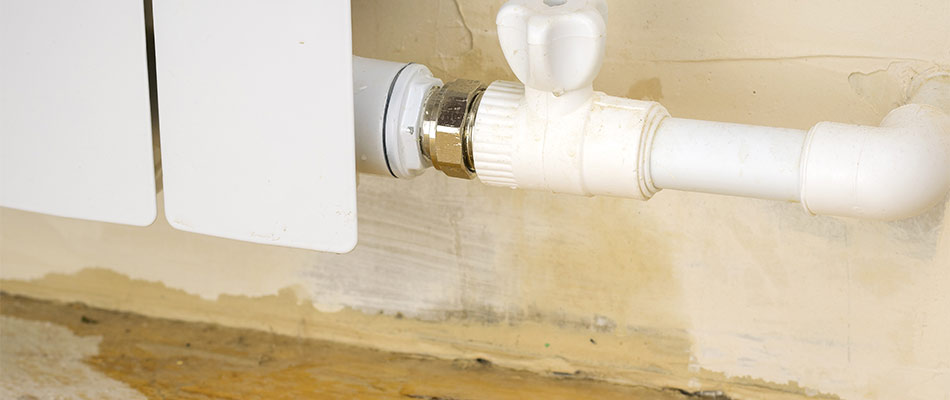Have you been in search of resources on Leaking water lines?

Early discovery of dripping water lines can reduce a possible disaster. Besides conserving you cash, it will minimize the worry and disappointment. The minute you discover a leakage, calling your plumber for repairs is the best service. Some small water leakages may not be visible. If you can not identify it with your nude eyes, below are some hacks that aid.
1. Check Out the Water Meter
Inspecting it is a proven method that aids you find leakages. If it moves, that suggests a fast-moving leakage. This implies you might have a slow leak that might also be underground.
2. Inspect Water Intake
If you identify unexpected modifications, despite your consumption being the very same, it indicates that you have leaks in your plumbing system. An unexpected spike in your expense indicates a fast-moving leakage.
On the other hand, a constant boost each month, despite having the exact same behaviors, reveals you have a slow-moving leakage that's additionally gradually escalating. Call a plumber to thoroughly check your residential property, specifically if you really feel a warm area on your flooring with piping below.
3. Do a Food Coloring Test
When it concerns water consumption, 30% comes from commodes. Examination to see if they are running appropriately. Decrease flecks of food shade in the tank and also wait 10 minutes. There's a leak in between the tank and also bowl if the color in some way infiltrates your bowl throughout that time without flushing.
4. Asses Outside Lines
Don't neglect to inspect your outdoor water lines also. Ought to water seep out of the link, you have a loose rubber gasket. One small leak can squander bunches of water and also surge your water bill.
5. Inspect and also Examine the Circumstance
Home owners need to make it a habit to examine under the sink counters as well as even inside cupboards for any kind of bad odor or mold growth. These 2 red flags indicate a leakage so prompt focus is needed. Doing regular examinations, also bi-annually, can save you from a significant problem.
Much more notably, if you understand your house is currently old, maintain a watchful eye on your heating systems, tubes, pipelines and so on. Check for stainings as well as deteriorating as a lot of pipes and devices have a life expectancy. They will additionally naturally deteriorate as a result of tear and also use. If you suspect dripping water lines in your plumbing system, don't wait on it to escalate. Call an expert plumber immediately so you do not wind up with an awful mess in your house.
Early detection of leaking water lines can alleviate a prospective disaster. Some little water leaks may not be visible. Inspecting it is a proven method that helps you find leakages. One little leakage can waste lots of water as well as surge your water costs.
If you think leaking water lines in your plumbing system, don't wait for it to escalate.
WARNING SIGNS OF WATER LEAKAGE BEHIND THE WALL
PERSISTENT MUSTY ODORS
As water slowly drips from a leaky pipe inside the wall, flooring and sheetrock stay damp and develop an odor similar to wet cardboard. It generates a musty smell that can help you find hidden leaks.
MOLD IN UNUSUAL AREAS
Mold usually grows in wet areas like kitchens, baths and laundry rooms. If you spot the stuff on walls or baseboards in other rooms of the house, it’s a good indicator of undetected water leaks.
STAINS THAT GROW
When mold thrives around a leaky pipe, it sometimes takes hold on the inside surface of the affected wall. A growing stain on otherwise clean sheetrock is often your sign of a hidden plumbing problem.
PEELING OR BUBBLING WALLPAPER / PAINT
This clue is easy to miss in rooms that don’t get much use. When you see wallpaper separating along seams or paint bubbling or flaking off the wall, blame sheetrock that stays wet because of an undetected leak.
BUCKLED CEILINGS AND STAINED FLOORS
If ceilings or floors in bathrooms, kitchens or laundry areas develop structural problems, don’t rule out constant damp inside the walls. Wet sheetrock can affect adjacent framing, flooring and ceilings.
https://www.servicemasterbyzaba.com/blog/how-to-detect-water-leakage-in-walls/

As a person who reads about Leaking water lines, I imagined sharing that excerpt was a smart idea. I beg you set aside a second to promote this blog if you enjoyed it. Bless you for your time. Visit us again soon.